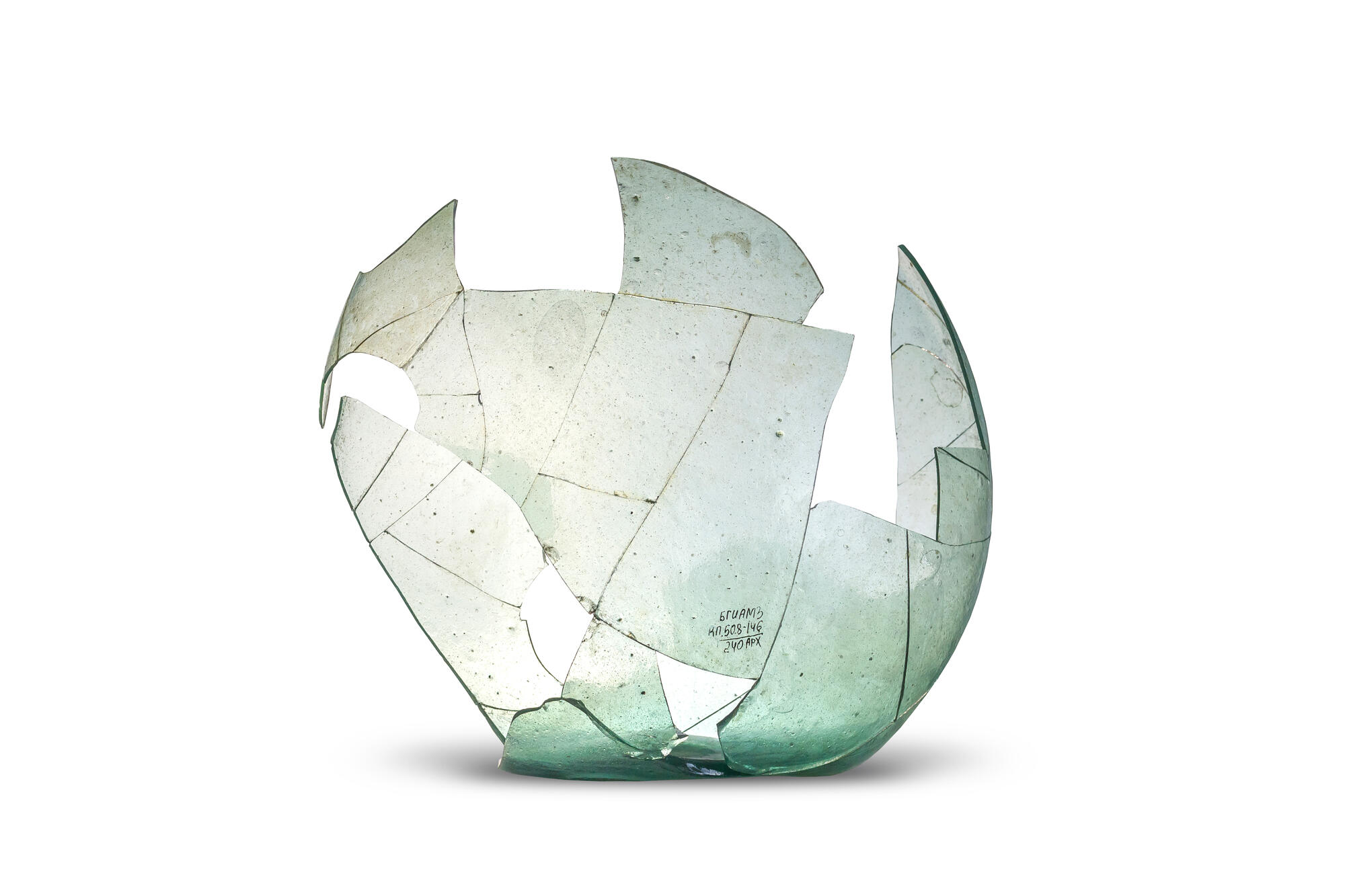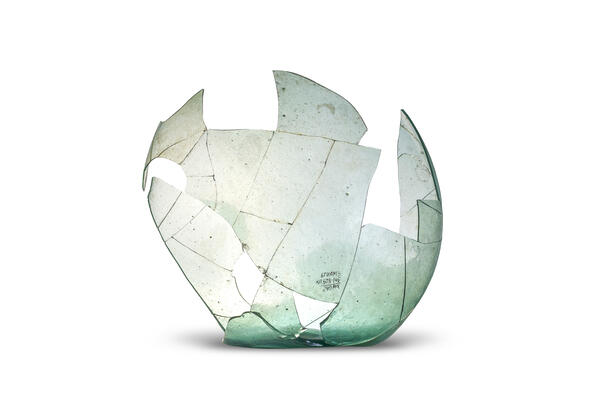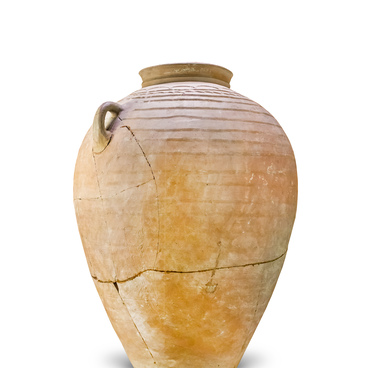The first glassware was made from random constituents. It was a mixture of ash, clay, sand, that is, those components that were used in the creation of ordinary ceramic products. The ash contained metal oxides, which lowered the melting point. Compounds of iron, manganese, and slags were used for staining the glass. For example, slags from the smelting of cobalt were used for dyeing blue.
One of the first methods of making glassware was invented in Phenicia long before Christ. The Phoenician method used sandy-argillaceous rods. Such a rod was dipped into a glass melt, and then a piece of glass melt being removed. After cooling, the interior was destroyed. A vessel with a very rough inner surface was made this way. When applying another method, filaments of glass melt were wound on a rod; this is how vessels with thin walls were obtained.
For centuries, possibilities of glassmaking had been limited by the temperature in the furnace. Over time, to raise the temperature of the molten glass, masters began to blast air into the fire. This was done first with a reed tube and then with the bellow. The bellow was a device with stretchable pleated walls for blasting air; they are used in small workshops up to this day.
The end of the reed tube was protected with clay plaster from being burnt. Presumably, one of the first glassmakers accidentally dipped a reed tube coated with clay into the glass melt and discovered that the molten glass extracted from a ceramic pot was blasted out. This is how the first blown product was made.
The glass blasting tube was invented at the beginning of AD. At the same time, they began to make in large quantities the vessels necessary for everyday life: bottles, jars, jugs, ladles, and other glassware.
The collection of the Bolgar Museum-Reserve has fragments of a glass flask made in the 13th-14th centuries. The object is rounded in shape, flattened from the sides, and the bottom is concave inside the vessel. A similar form of a flask has been preserved to this day. Nowadays, such vessels are made not only of glass but also of ceramics and metal.
One of the first methods of making glassware was invented in Phenicia long before Christ. The Phoenician method used sandy-argillaceous rods. Such a rod was dipped into a glass melt, and then a piece of glass melt being removed. After cooling, the interior was destroyed. A vessel with a very rough inner surface was made this way. When applying another method, filaments of glass melt were wound on a rod; this is how vessels with thin walls were obtained.
For centuries, possibilities of glassmaking had been limited by the temperature in the furnace. Over time, to raise the temperature of the molten glass, masters began to blast air into the fire. This was done first with a reed tube and then with the bellow. The bellow was a device with stretchable pleated walls for blasting air; they are used in small workshops up to this day.
The end of the reed tube was protected with clay plaster from being burnt. Presumably, one of the first glassmakers accidentally dipped a reed tube coated with clay into the glass melt and discovered that the molten glass extracted from a ceramic pot was blasted out. This is how the first blown product was made.
The glass blasting tube was invented at the beginning of AD. At the same time, they began to make in large quantities the vessels necessary for everyday life: bottles, jars, jugs, ladles, and other glassware.
The collection of the Bolgar Museum-Reserve has fragments of a glass flask made in the 13th-14th centuries. The object is rounded in shape, flattened from the sides, and the bottom is concave inside the vessel. A similar form of a flask has been preserved to this day. Nowadays, such vessels are made not only of glass but also of ceramics and metal.



